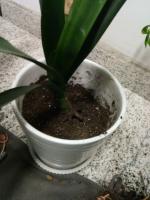Introduction
The cell membrane is a critical part of both plant and animal cells. It acts as a barrier that separates the interior of the cell from the external environment, controlling what enters and exits the cell. This article explores the composition and functions of the cell membrane, with a focus on whether it differs between plant and animal cells.
Structure and Composition of the Cell Membrane
The cell membrane is made up of a phospholipid bilayer, which consists of two layers of phospholipids arranged tail to tail. Each phospholipid molecule has a hydrophilic (water-loving) head and a hydrophobic (water-fearing) tail. The hydrophilic heads face outwards, towards the exterior and interior of the cell, while the hydrophobic tails face inwards, towards each other.
In addition to phospholipids, the cell membrane also contains other molecules, such as proteins and cholesterol. Proteins are embedded within the phospholipid bilayer, with some extending through the membrane to the exterior or interior of the cell. These proteins have various functions, such as transporting molecules in and out of the cell and acting as receptors for signaling molecules. Cholesterol, on the other hand, helps to stabilize the cell membrane by reducing its fluidity.
Functions of the Cell Membrane
The cell membrane performs several functions, including:
Providing a barrier between the cell's interior and the external environment
Regulating the movement of molecules in and out of the cell
Facilitating cell-to-cell communication
Providing support and shape to the cell
The movement of molecules across the cell membrane occurs through a variety of mechanisms, such as diffusion, osmosis, and active transport. Diffusion involves the movement of molecules from an area of high concentration to an area of low concentration, while osmosis describes the movement of water molecules across the membrane from an area of low solute concentration to an area of high solute concentration. Active transport, on the other hand, requires energy to move molecules across the membrane against their concentration gradient.
Does the Cell Membrane Differ Between Plant and Animal Cells?
While the basic structure and functions of the cell membrane are similar in both plant and animal cells, there are some differences between the two. One major difference is the presence of a cell wall in plant cells, which is absent in animal cells. The cell wall is a tough, protective layer that surrounds the cell membrane, providing support and protection to the plant cell. It is made up of a complex polysaccharide called cellulose, which gives it strength and rigidity.
Another difference is the presence of specialized structures in plant cells called plasmodesmata. These are small channels that traverse the cell wall and allow for direct communication between adjacent plant cells. In contrast, animal cells communicate using specialized junctions called gap junctions or tight junctions.
Conclusion
The cell membrane is a vital component of both plant and animal cells. It acts as a selective barrier that controls the movement of molecules in and out of the cell, facilitating communication and providing support to the cell. While there are some differences in the cell membrane between plant and animal cells, the basic structure and functions remain the same. Understanding the properties and functions of the cell membrane is essential in understanding the workings of cells and the complex processes that occur within them.

 how many times do yo...
how many times do yo... how many planted tre...
how many planted tre... how many pine trees ...
how many pine trees ... how many pecan trees...
how many pecan trees... how many plants comp...
how many plants comp... how many plants can ...
how many plants can ... how many plants and ...
how many plants and ... how many pepper plan...
how many pepper plan...































